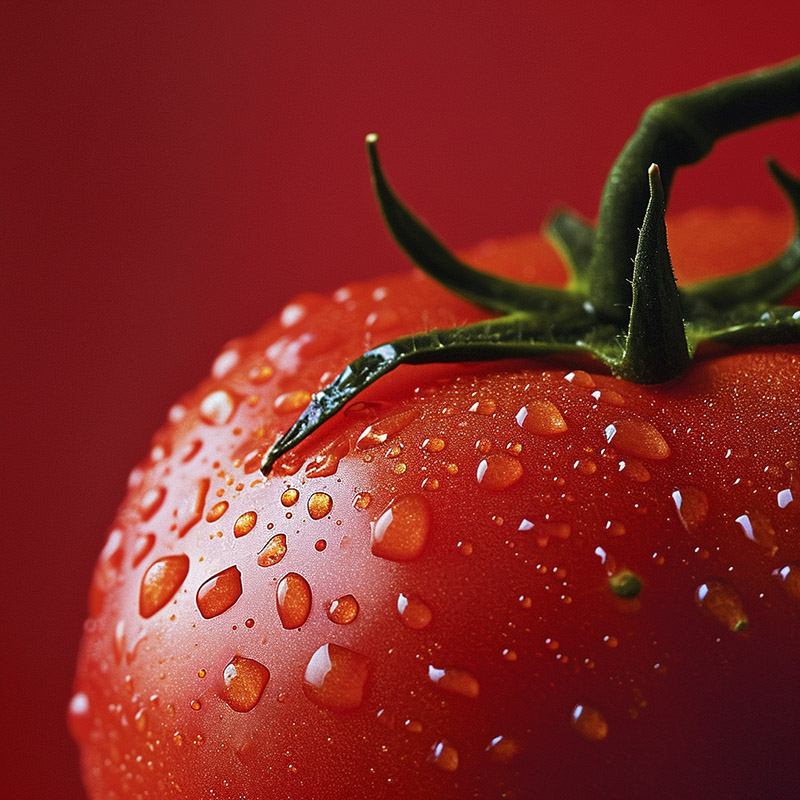
Tomatoes, a versatile and ubiquitous ingredient in cuisines around the world, are not just culinary staples but also nutritional powerhouses. Botanically classified as fruits but commonly used as vegetables in cooking, tomatoes originated in South America and have become an integral part of various culinary traditions, from Italian to Mexican, owing to their unique flavor and health benefits.
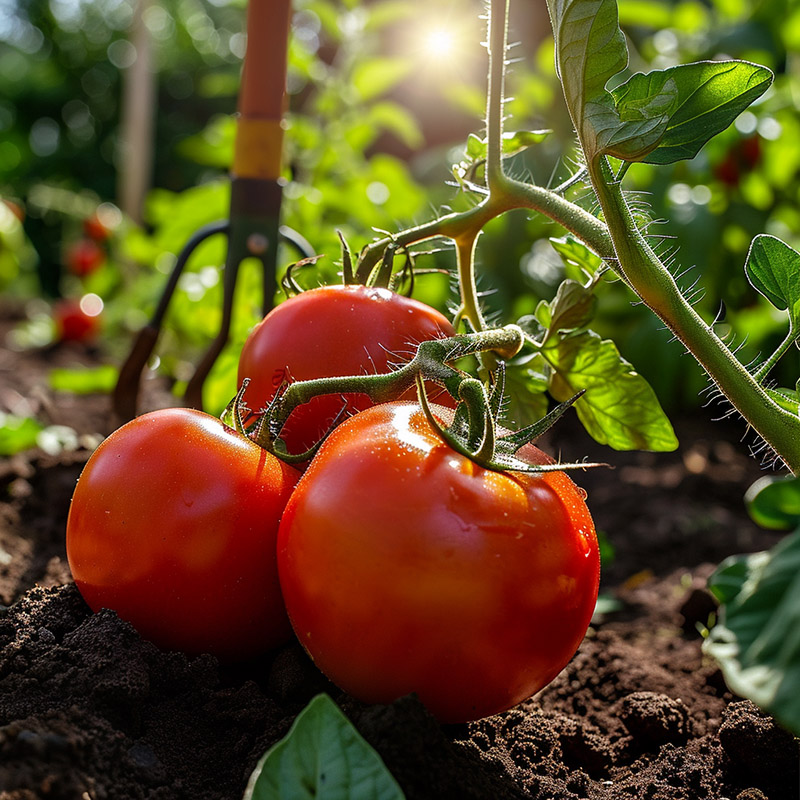
In cuisine, tomatoes are celebrated for their versatility. They can be used in their raw form, adding a juicy, refreshing taste to salads, sandwiches, and salsas. When cooked, tomatoes release a richer flavor and aroma, making them a foundation for sauces, soups, stews, and curries. Their natural acidity balances the richness in dishes like pasta sauces, chili, and pizza, and they can be roasted to enhance their sweetness and add depth to a dish. Tomatoes also play a crucial role in creating the base for many stocks and broths, imparting a subtle sweetness and body to the liquid.

Beyond their culinary uses, tomatoes offer numerous health benefits. They are an excellent source of vitamin C, potassium, folate, and vitamin K. One of their most notable attributes is their high lycopene content. Lycopene is a powerful antioxidant that has been linked to reduced risks of heart disease and cancer, particularly prostate cancer. The bioavailability of lycopene increases when tomatoes are cooked and processed, which is why tomato-based sauces and pastes are not just flavorful but also particularly beneficial.
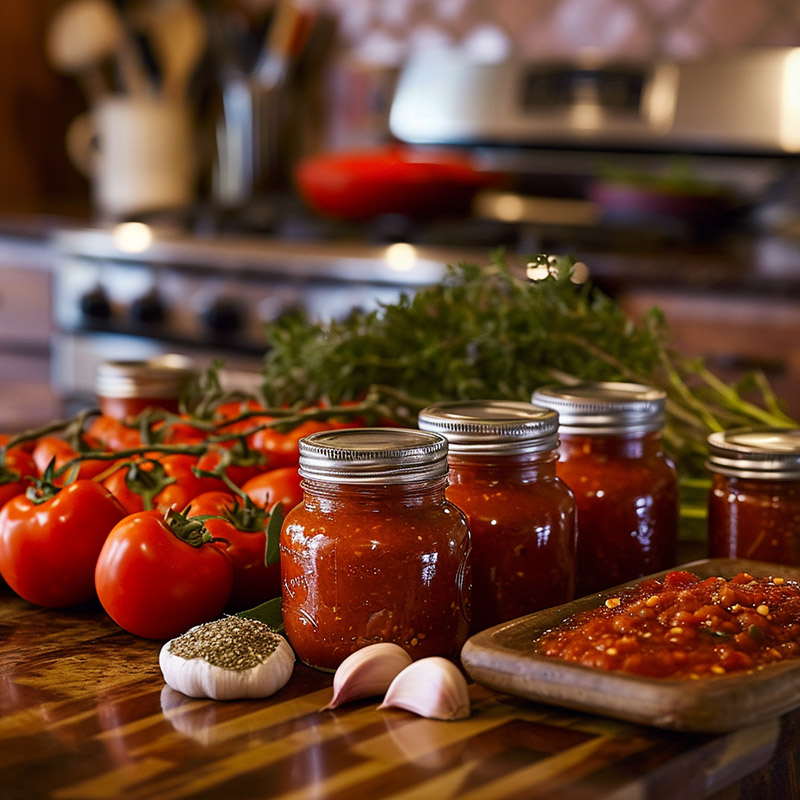
Tomatoes also contain a good amount of dietary fiber, which aids in digestion and helps maintain a healthy gut. Their low calorie and high water content make them a great choice for weight management and hydration. Furthermore, tomatoes provide other beneficial plant compounds, including naringenin and chlorogenic acid, which have been shown to reduce inflammation and lower blood pressure.

It's also worth noting the vast variety of tomatoes available, each with its unique taste and culinary application. These range from small, sweet cherry and grape tomatoes, perfect for salads and snacking, to the larger beefsteak variety, ideal for sandwiches and burgers. Heirloom tomatoes, known for their diverse colors and flavors, are highly sought after for gourmet dishes.

Tomatoes are a fundamental ingredient in global cuisine, and they are also a nutrient-dense food that contributes to a healthy diet. Their versatility in cooking, from fresh salads to hearty cooked dishes, along with their array of health benefits, including high levels of antioxidants, vitamins, and fiber, make them an invaluable component of a balanced diet. Whether enjoyed in a simple, fresh bruschetta or a complex, slow-cooked marinara sauce, tomatoes bring both flavor and nutrition to the table.
High Levels of Lycopene
 In 2002, tomatoes containing high levels of the cancer-fighting antioxidant lycopene were developed by researchers from Purdue University and the U.S. Department of Agriculture. The tomatoes have three times the amount of the pigment lycopene than conventional tomatoes.
In 2002, tomatoes containing high levels of the cancer-fighting antioxidant lycopene were developed by researchers from Purdue University and the U.S. Department of Agriculture. The tomatoes have three times the amount of the pigment lycopene than conventional tomatoes.
Forget the attack of the killer tomato, this is the attack of the healthy tomato: A team of scientists has developed a tomato that contains as much as three and a half time more of the cancer-fighting antioxidant lycopene.
It turns out that the antioxidant-rich tomato was a happy accident.
Scientists at Purdue University and the U.S. Department of Agriculture's Agricultural Research Service were working to develop tomatoes for food processing that were of higher quality and would ripen later.
They accomplished that, but in the process they discovered that the new tomatoes also had significantly more of the antioxidant than conventional tomatoes.
"We were quite pleasantly surprised to find the increase in lycopene," says Avtar Handa (pronounced "Honda"), professor of horticulture at Purdue.
Although increasing the nutritional value of foods is the goal of so-called second-generation biotechnology products, there have been few success stories.
"This is one of the first examples of increasing the nutritional value of food through biotechnology," Handa says. "In fact, it may be the first example of using biotechnology to increase the nutritional value of a fruit."
Co-discoverer Autar Mattoo, who heads the USDA Vegetable Laboratory, says the increase in lycopene occurred naturally in the genetically modified tomatoes. "The pattern for the accumulation was the same as in the control tomatoes," he says. "The lycopene levels increased two to 3.5 times compared to the non-engineered tomatoes."
The research was announced this week in the June issue of Nature Biotechnology.
A separate article on the research in Nature Biotechnology noted, "The findings ... remind us that in the 'rational' and quantitatively driven post-genomic era, serendipity still has a large part to play."
A U.S. patent application has been filed on behalf of the joint owners USDA and the Purdue Research Foundation. The Consortium for Plant Biotechnology Research Inc., a USDA funded program, funded the research.
Lycopene is a pigment that gives tomatoes their characteristic red color. It is one of hundreds of carotenoids that color fruits and vegetables red, orange or yellow. Of these pigments, the most familiar is the beta-carotene, which is found in carrots.
In the body these pigments capture electrically charged oxygen molecules that can damage tissue. Because of this they are called antioxidants.
Lycopene has been the focus of much attention since 1995, when a six-year study of nearly 48,000 men by Harvard University found that men who ate at least 10 servings of foods per week containing tomato sauce or tomatoes were 45 percent less likely to develop prostate cancer. The study also found that those who ate four to seven servings per week were 20 percent less likely to develop the cancer.
That research was published in the Journal of the National Cancer Institute.
Subsequent research has found that lycopene also reduces the amount of oxidized low-density lipoprotein -- the so-called bad cholesterol -- and therefore may reduce the risk of heart disease.
As an antioxidant, lycopene is able to capture twice as many oxygen ions in the body as is beta-carotene.
"This characteristic may be responsible for lycopene's ability to mitigate epithelial cancers, such as breast cancer and prostate cancer, and for its ability to mitigate coronary artery disease," Mattoo says.
Despite the apparent benefits, it's been difficult to increase the amount of lycopene in the diet, says Randy Woodson, director of Agricultural Research Programs at Purdue.
Studies have found that taking purified antioxidants as a dietary supplement doesn't work. In fact, one study found that giving beta-carotene to smokers actually increased their chances of developing cancer.
"When you just take lycopene as a drug it doesn't have the same effect," Woodson says. "There is still a lot of biology to understand before we know why phytonutrients in food are so much more effective than if they are given as supplements."
Another wrinkle is that when it comes to lycopene in tomatoes, cooked tomato sauces are more effective than raw tomatoes.
This may be because cooking breaks the cell walls of the tomato, releasing more of the lycopene. Or it may be that cooking oil allows the lycopene to move more easily into the body.
To develop the lycopene-rich tomato, the researchers inserted a gene, derived from yeast, fused to a promoter gene into tomato plants. The promoter gene helps turn on the yeast gene in the tomato.
"The promoter gene is like a ZIP code that tells the yeast gene when and where to turn on in tomato," Handa says. "For high-lycopene tomatoes we used a promoter that targeted expression of the introduced gene in fruits only."
The yeast gene itself produces an enzyme that affected the production of growth substances in the plants called polyamines, which are known to help prevent cell death.
In plant cells, polyamines help build new, beneficial compounds.
"They may stabilize membrane networks that involve longevity of physical structures in the cells called chromoplasts," Mattoo says. "Because lycopene accumulates in chromoplasts in the tomato fruit cells, in this case the polyamines seem to have a positive effect."
The polyamines share a precursor with a plant hormone called ethylene that causes ripening in many fruits.
The researchers thought that because ripening was delayed there must have been a decrease in ethylene, but found the opposite was true.
"That's not how we started out thinking, but that's why we do experiments," Mattoo says. "Now we know the change -- i.e., allowing the accumulation of polyamines in the fruit -- doesn't necessarily affect ethylene production, but ethylene action. We think the polyamines has changed the ethylene receptors on the cell membranes, but we are looking into that."
Handa says the technique used in this research might also be used to increase the amount of other antioxidants in foods.
"We are excited about this approach, not only because it results in an increase in lycopene in tomato, but because we think this approach could be used to increase the phytonutrient content of other fruits and vegetables," he says.
ABSTRACT
Title Engineered polyamine accumulation in tomato enhances phytonutrient content, juice quality and vine life
Roshni A. Mehta 1, Tatiana Cassol1, Ning Li2, Nasreen Ali1, Avtar K. Handa3, and Autar K. Mattoo1
1 USDA-ARS Henry A. Wallace Beltsville Agricultural Research Center, Beltsville, MD; 2 The Hong Kong University of Science and Technology, Hong Kong SAR, China; 3P urdue University, West Lafayette, IN
Polyamines, ubiquitous organic aliphatic cations, have been implicated in a myriad of physiological and developmental processes in many organisms, but their in vivo functions remain to be determined. We expressed a yeast S-adenosylmethionine decarboxylase gene(ySAMdc: Spe2) fused with a ripening-inducible E8 promoter to specifically increase levels of the polyamines spermidine and spermine in tomato fruit during ripening. Independent transgenic plants and their segregating lines were evaluated after cultivation in the greenhouse and in the field for five successive generations. The enhanced expression of the ySAMdc gene resulted in increased conversion of putrescine into higher polyamines and thus to ripening-specific accumulation of spermidine and spermine. This led to an increase in lycopene, prolonged vine life, and enhanced fruit juice quality. Lycopene levels in cultivated tomatoes are generally low, and increasing them in the fruit enhances its nutrient value. Furthermore, the rates of ethylene production in the transgenic tomato fruit were consistently higher than those in the nontransgenic control of fruit. These data show that polyamine and ethylene biosynthesis pathways can act simultaneously in ripening tomato fruit. Taken together, these results provide the first direct evidence for a physiological role of polyamines and demonstrate an approach to improving nutritional quality, juice quality, and the vine life of tomato fruit.
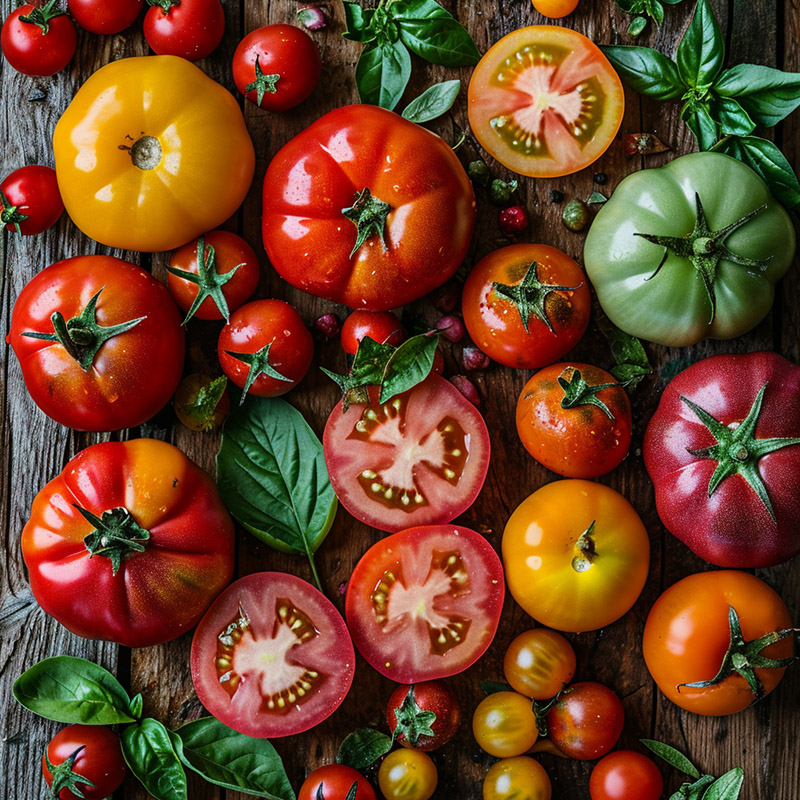
April 19, 2002 - Cooking plump red tomatoes boosts disease-fighting, nutritional power
Cooking tomatoes -- such as in spaghetti sauce -- makes the fruit heart-healthier and boosts its cancer-fighting ability. All this, despite a loss of vitamin C during the cooking process, say Cornell food scientists. The reason: cooking substantially raises the levels of beneficial compounds called phytochemicals.
Writing in the latest issue of the Journal of Agriculture and Food Chemistry (April 17), Rui Hai Liu, M.D., Cornell assistant professor of food science, notes, "This research demonstrates that heat processing actually enhanced the nutritional value of tomatoes by increasing the lycopene content -- a phytochemical that makes tomatoes red -- that can be absorbed by the body, as well as the total antioxidant activity. The research dispels the popular notion that processed fruits and vegetables have lower nutritional value than fresh produce."
Tomato samples were heated to 88 degrees Celsius (190.4 degrees Fahrenheit) for two minutes, a quarter-hour and a half-hour. Consistent with previous studies, vitamin C content decreased by 10, 15 and 29 percent, respectively, when compared to raw, uncooked tomatoes. However, the research revealed that the beneficial trans-lycopene content of the cooked tomatoes increased by 54, 171 and 164 percent, respectively. Levels of cis -lycopene (which the body easily absorbs) rose by 6, 17 and 35 percent, respectively; and antioxidant levels in the heated tomatoes increased by 28, 34 and 62 percent, respectively. Antioxidants protect the human body from cell and tissue damage, which occurs when harmful molecules called free radicals, released as oxygen, are metabolized by the body.
Lycopene, a carotenoid responsible for the red color in tomatoes and other fruits, has long been known as a powerful antioxidant that decreases cancer and heart-disease risk. Carotenoids, along with phenolic acids and flavonoids, are all phytochemicals, the nutritionally beneficial active compounds found in every fruit and vegetable.
While the antioxidant activity in tomatoes is enhanced during the cooking process, vitamin C loss occurs when the food's ascorbic acid is oxidized to dehydroascorbic acid and other forms of nutritionally inactive components.Lycopene is the most-efficient single oxygen quencher, and devours more than 10 times more oxygenated free radicals than vitamin E. "This makes lycopene's presence in the diet important," says Liu.
"While these findings go against the notion that processed fruits and vegetables have lower nutritional value, this may create a new image for processed fruits and vegetables," says Liu. "Ultimately, this could increase consumers' intake of fruits and vegetables and could possibly reduce a person's risk of chronic disease."
Liu's coauthors on the research paper, "Thermal Processing Enhances the Nutritional Value of Tomatoes by Increasing Total Antioxidant Activity," are Cornell graduate students Veronica Dewanto and Kafui K. Adom, and a visiting fellow in Liu's laboratory, Xianzhong Wu. The research was funded with Hatch funds from the U.S. Department of Agriculture's Cooperative State Research, Education and Extension Service.
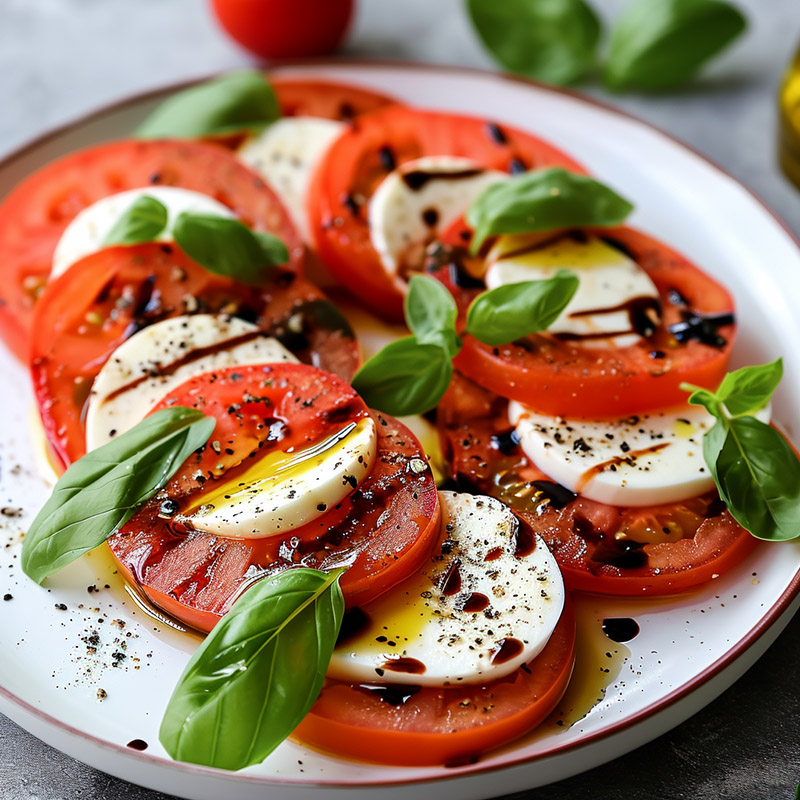
April 11, 2002 - Discovery of Ripening Gene Could Make Store-Bought Tomatoes as Tasty as Homegrown
The fruits of genetic research are about to ripen: Scientists at the U.S. Department of Agriculture (USDA) and the Boyce Thompson Institute for Plant Research, Inc. (BTI), located on the campus of Cornell University, have discovered a gene that controls ripening in tomatoes.
This means that tastier, more-nutritious grocery-store tomatoes are not far behind, say the researchers in an article in the latest issue of the journal Science (April 12, 2002), titled "A MADS-box gene necessary for fruit ripening at the tomato ripening-inhibitor (rin ) locus."
"For understanding tomato ripening and eventually taste, this could be the Holy Grail," says Jim Giovannoni, a project scientist with the USDA and also with BTI.
MADS refers to a family of genes (the name is an acronym formed from the initials of the four original members of the family). More than 100 MADS-box sequences have been found in species of microbes, animals and plants, and most play important roles in developmental processes. Most prominent, the MADS-box genes in flowering plants are the "molecular architects" of growth.
Giovannoni and his colleagues have found two tandem MADS-box genes, one a ripening gene, the LeMADS-RIN (or rin for short), and the other the LeMADS-MC gene, which controls the development of the sepal -- the collar of pointy green leaves at the top of tomatoes. Finding these genes provides the first molecular insight into a non-hormonal way to ripen fruit, he says.
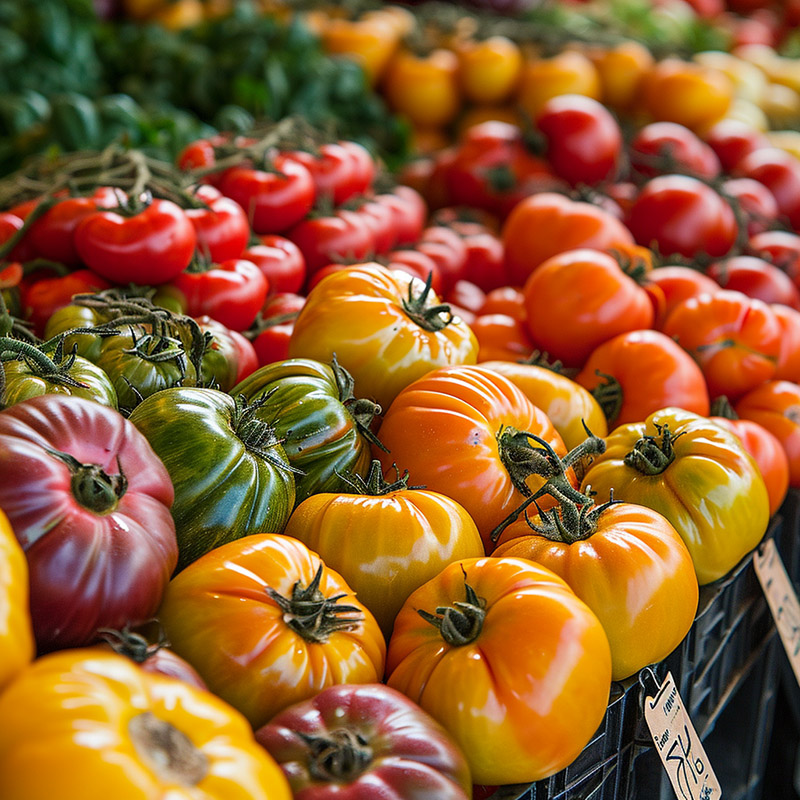
The shelf life of tomatoes was lengthened by the discovery in the early 1960s, by Henry Munger, Cornell professor of plant breeding, of a mutant tomato plant containing what Giovannoni and his group now have shown to be a defect in the rin gene. Munger crossed this mutant plant with normal tomatoes, allowing the fruit to reach full size while slowing the ripening process. Today, this hybrid is commercially ubiquitous. But, says Giovannoni, in order to be fresh for the supermarket, these tomatoes are harvested while they are still firm and unripe so they can survive the rigors of shipping and have an extended shelf life. As a result, tomato flavors, typical of homegrown fruit, do not get a chance to develop on the vine, and consumers complain about their blandness.
The discovery of the rin gene provides a way to keep the tomato on the vine a little longer so that it develops more nutrients, color and taste, Giovannoni says. And yet it is still firm enough for shipping, and with a good shelf life. As a bonus, the longer a tomato remains on the vine, the more lycopene (an antioxidant that inhibits cancer and heart disease) is produced.
Giovannoni's research team also has been able to moderate the ripening process, creating tomatoes that ripen at fast, medium or slow speeds. Using a procedure called "antisense," the researchers take the rin gene and invert it. This effectively shuts off the normal gene and, in this case, slows the tomato's ripening process. The procedure, says Giovannoni, also should work with strawberries, bananas, bell peppers and melons, in addition to many other fruits for which shelf life and softening are problems. This, says Giovannoni, could reduce the use of ethylene to kick-start ripening after fruit has been shipped to the warehouse.
Giovannoni's co-authors of the Science paper are: Julia Vrebalov, research associate at the USDA-Agricultural Research Service's Plant, Soil and Nutrition Laboratory and at BTI; Ruth White, a researcher at the USDA and BTI; Diana Medrano, researcher, BTI; Rachel Drake, of Syngenta; Wolfgang Schuch, formerly of Syngenta, now with CellFor, Inc.; and former members of the Giovannoni lab, Diane Ruezinsky, now with Monsanto, and Veeraragavan Padmanabhan, now with Pioneer Seed.
Early work on the research was conducted by Giovannoni at the Texas Agricultural Experiment Station. The research was funded by the USDA-National Research Initiative plant genome grant, the National Science Foundation and Syngenta.
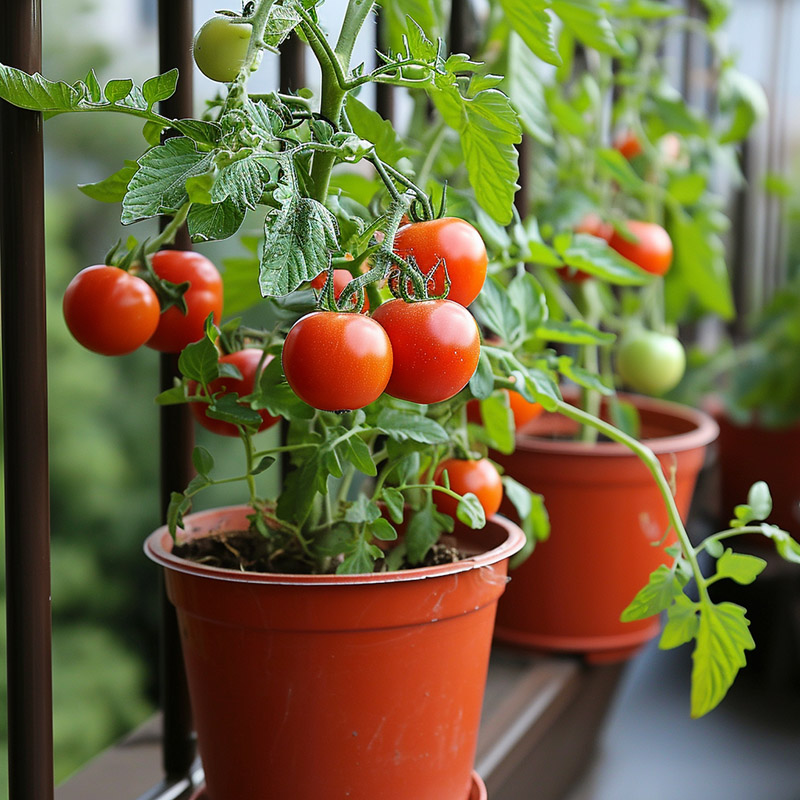
Here are some useful tips for growing tomatoes:
- Choose disease-resistant tomato varieties. Look for labels that say VFN or VFNT, which indicate resistance to verticillium, fusarium, nematodes, and tobacco mosaic virus.
- Start seeds indoors 6-8 weeks before your last expected frost date. Tomatoes need time to establish before being transplanted outside. Use a seed starting mix and grow seedlings in full sun.
- Transplant seedlings outdoors after hardening them off first. Wait until daytime temps are regularly 55-65°F or soil temps reach 60°F. Space plants 18-24 inches apart in nutrient-rich soil.
- Use cages, stakes, or trellises to support your tomato plants and keep the fruit off the ground. This prevents disease and rot.
- Water at the base of plants, avoiding wetting the leaves which can promote disease. Provide 1-2 inches of water per week. Use drip irrigation or soaker hoses.
- Mulch around plants with compost or straw to retain soil moisture and prevent weeds.
- Prune suckers and extra growth to keep plants putting energy into fruit rather than vegetation.
- Check plants regularly for pest or disease problems. Address issues promptly to keep plants healthy. Common tomato afflictions include blossom end rot, hornworms, blight, and wilt.